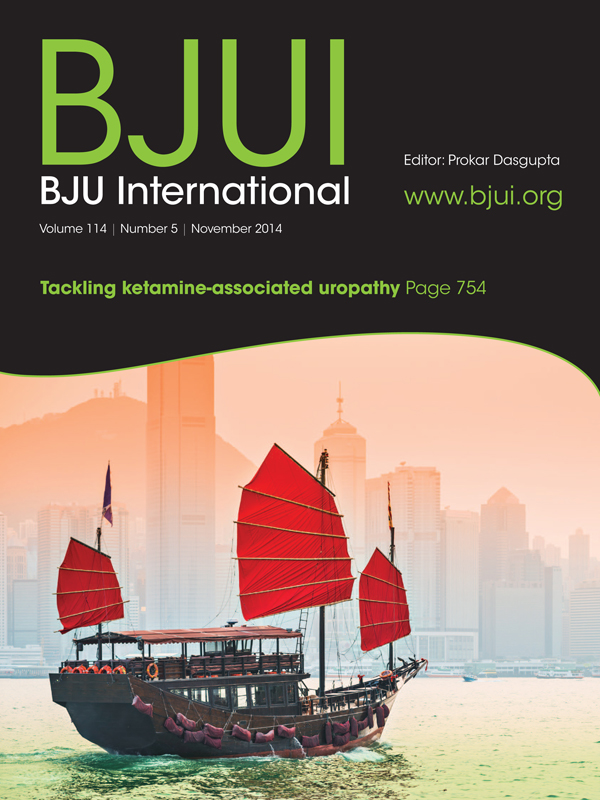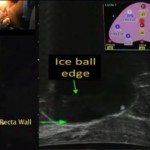Article of the Month: One-stop clinic for ketamine-associated uropathy
Every week the Editor-in-Chief selects the Article of the Week from the current issue of BJUI. The abstract is reproduced below and you can click on the button to read the full article, which is freely available to all readers for at least 30 days from the time of this post.
In addition to the article itself, there is an accompanying editorial written by a prominent member of the urological community. This blog is intended to provoke comment and discussion and we invite you to use the comment tools at the bottom of each post to join the conversation.
If you only have time to read one article this week, it should be this one.
One-stop clinic for ketamine-associated uropathy: report on service delivery model, patients’ characteristics and non-invasive investigations at baseline by a cross-sectional study in a prospective cohort of 318 teenagers and young adults
Yuk-Him Tam*, Chi-Fai Ng*, Kristine Kit-Yi Pang*, Chi-Hang Yee*, Winnie Chiu-Wing Chu†, Vivian Yee-Fong Leung†, Grace Lai-Hung Wong‡, Vincent Wai-Sun Wong‡, Henry Lik-Yuen Chan‡ and Paul Bo-San Lai*
Departments of *Surgery, Youth Urological Treatment Centre, †Imaging and Interventional Radiology, and ‡Medicine and Therapeutics, Prince of Wales Hospital, The Chinese University of Hong Kong, Hong Kong, China
OBJECTIVE
To describe a service delivery model and report the baseline characteristics of patients investigated by a non-invasive approach for ketamine-associated uropathy.
PATIENTS AND METHODS
This was a cross-sectional study in a prospective cohort of patients who attended their first visit and underwent non-invasive investigations at a dedicated centre to treat ketamine-associated uropathy in Hong Kong from December 2011 to July 2013. Data on demographics, illicit ketamine use, symptoms scores and voiding function parameters at baseline were prospectively collected. Differences between active abusers and ex-abusers, and risk factors for the most symptomatic group were investigated by univariate and multivariate analysis.
RESULTS
In all, 318 patients completed the non-invasive assessment at their first visit and were eligible for inclusion. In all, 174 were female and the mean (sd) age of the entire cohort was 24.4 (3.1) years. Patients had used ketamine for a mean (sd) period of 81 (36) months. The mean (sd) ketamine use per week was 18.5 (15.8) g. In all, 214 patients were active abusers while 104 were ex-abusers but had persistent lower urinary tract symptoms. The mean (sd) voided volume, bladder capacity, and bladder emptying efficiency were 111.5 (110) mL, 152.5 (126) mL and 73.3 (26.9)%, respectively. The ex-abusers had a lower symptom score (19.3 vs 24.1; P < 0.001), a larger voided volume (126 vs 85 mL; P < 0.001), and a larger bladder capacity (204.8 vs 126.7 mL; P < 0.001) compared with active abusers. Multivariate analysis found female gender was associated with a higher symptom score (odds ratio [OR] 2.39; 95% confidence interval [CI] 1.35–4.23; P = 0.003) and a smaller voided volume (OR 1.9; 95% CI 1.1–3.3; P = 0.02). Ketamine taken (g/week) was another risk factor for a higher symptom score (OR 1.03; 95% CI 1.01–1.05; P = 0.002). Status of ex-abuser was the only protective factor associated with fewer symptoms, larger voided volume and bladder capacity.
CONCLUSIONS
An effective service model for recruiting patients with ketamine-associated uropathy is possible. With such a service model as a platform, further prospective studies are warranted to investigate the appropriate choice of treatment for this new clinical entity.



